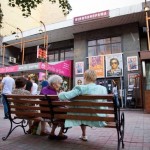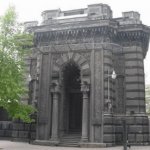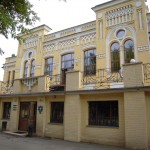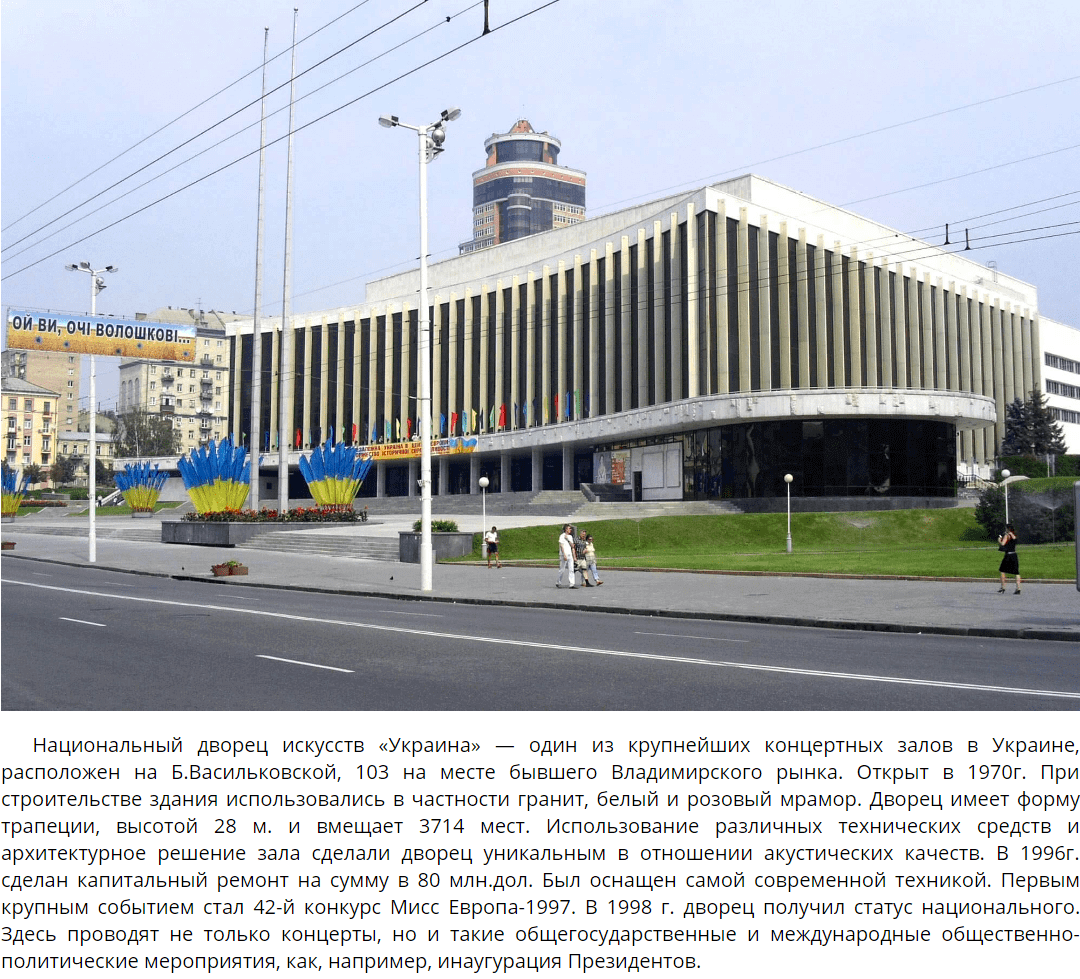Synagogues in Kiev
- The Rozenberg Synagogue
- The Brodsky Synagogue
- The Merchant Synagogue
- Karaim kenassa
- The Halytska Synagogue
– Rozenberg Synagogue. The construction of its building was funded in 1899 by the merchant Gabriel-Yakov Rozenberg and is located on the Shchekavytska Street, 29. With the advent of Soviet power, the synagogue was closed at one time, but after the World War II the synagogue was restored. Before the proclamation of Ukraine’s independence, it was the only functioning Jewish prayer house in Kyiv. Today it is the synagogue of the Kiev Jewish community.
– The Brodsky Synagogue – was built in 1898 with the donations of the Kyiv Jew – millionaire Lazar Brodsky and is situadted on the street Shota Rustavelli, 13. Since the Jews were not allowed to build religious buildings in the central part of Kyiv, the draft of the synagogue was rejected by the provincial authorities. It was allowed to accommodate living and household premises for ritual purposes.
Then Brodsky and Kyiv rabbi Evsei Zukkerman decided to play smart by sending a complaint and a drawing of the side facade of the synagogue, from where the building looked like a household premise to St. Petersburg. And the Senate gave its permission. The building was built in a year, construction was carried out by Lev Ginzburg’s best construction company in the city. In 1926, the building was transferred to the club for a trade union of handicraftsmen.
Since 1955, a children’s puppet theater was located there, in 1997 the building was transferred to the Jewish community of Kiev. There is a museum in the hall of the synagogue where one can see the work of the Israeli sculptor Frank Meisler, the fragment of the Torah scroll of the 2nd-5th c., a copy of the key from the opening of the synagogue in 1898, ancient books, bales, tefillins, mezuzah, candlesticks.
– The Merchant Synagogue – Jewish synagogue, built in 1899 on the means of a sugar-producer entrepreneur and philanthropist Lev Brodsky (Shota Rustaveli Str., 19). It was called the Merchant synagogue, because rich Jews and merchants came here to pray. In the 1930s. With the advent of Soviet power, the synagogue was closed, and the premises were given to the gymnasium for physical education for the gym. Later there was a polygraphic club.
In the 1950s the building of the synagogue was reconstructed and completely modified, after which the first panoramic cinema was opened at that time. Today, the cinema “Kinopanorama” also works here, in which screenings of festival films, performances, anniversaries and creative evenings of actors are held.
– Karaim kenassa – was built in 1898–1902 in the Moorish-Arabic style (the only structure in this style) on the initiative of Solomon Cohen, the owner of tobacco factories (V. Horodetskyi was the architect). The size of the building is not large: the interior of the manor is 30 m, the width of the facade is 14 m, the height to the top of the roof is 18 m. But the walls are of considerable thickness (almost 1.5 m at the base) and, therefore, 500 thousand units of bricks were used for their erection.
Such massiveness was dictated by the peculiarities of the Moorish style of the structure. On the building there originally was a magnificent dome of galvanized iron with a spire, with patterns and ornaments. Unfortunately, during the Soviet era, the dome was destroyed, and the building lost the excellent Arabic style.
All the external design of the kenassa (the edging of the entrance door and niche, the ornaments of the windows and the parapet, the pendants descending from the top cornice along the entire perimeter) was made from the cement, which at that time was an expensive material. there is a lobby, two small side rooms and a main prayer hall divided by an arch into two unequal parts in the building.
The hall is struck by the beauty of the elegant stucco ornaments that filled the whole area of the walls. They are complemented by colorful stained glass windows. Since 1920, the kenassa had been closed, and the activities of the community had been discontinued. Later, there was an institution of political education, a house of the peoples of the East, a puppet theater, a cinema “Dawn”, and since 1981 there has been an actor’s house where exhibitions, concerts and evening events take place.
– The Halytska synagogue – built in the Romanesque style in the period of 1909-1910 on the initiative and funds of the Galician Jewish Prayer Society, is located on the Zhylyanska Str., 97. In the two-storeyed building there was a prayer hall and a gallery for women. In the 1920’s the synagogue was called “Beis-Yaakov” and counted up to 750 parishioners. In 1930, the synagogue was closed, and the building was handed over to the “Transsignal” factory for a workers’ dining room.
Only in 2001 the building had been returned to the Jewish community, after which the Jewish divine services were resumed. Today in the Halytska synagogue there is the international Jewish community “Midrash Tsionit” – a young community belonging to the national-religious trend in Judaism. Every day minyan gather here, Saturday and festive services are held, adults and children gather for community meals and lessons.










